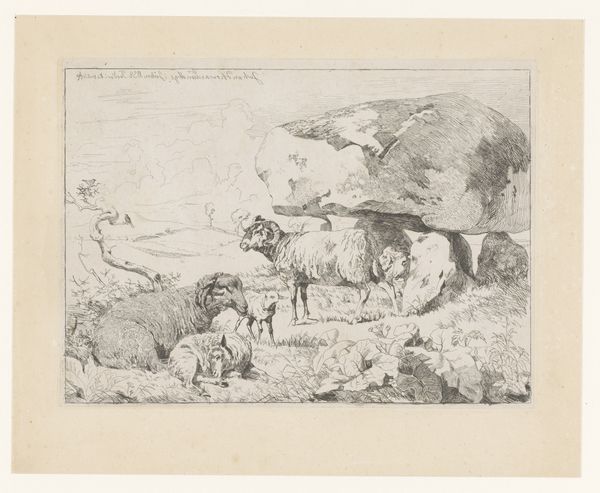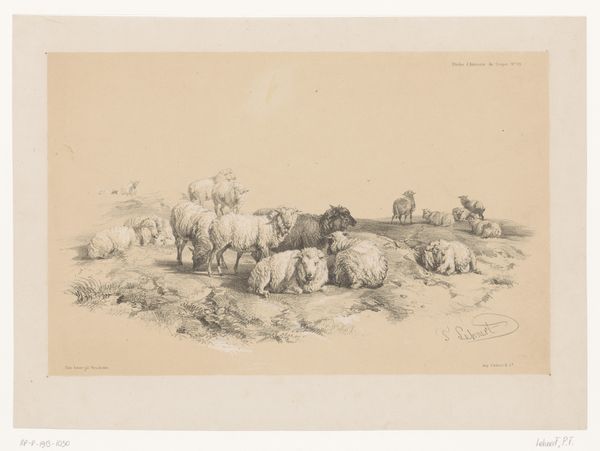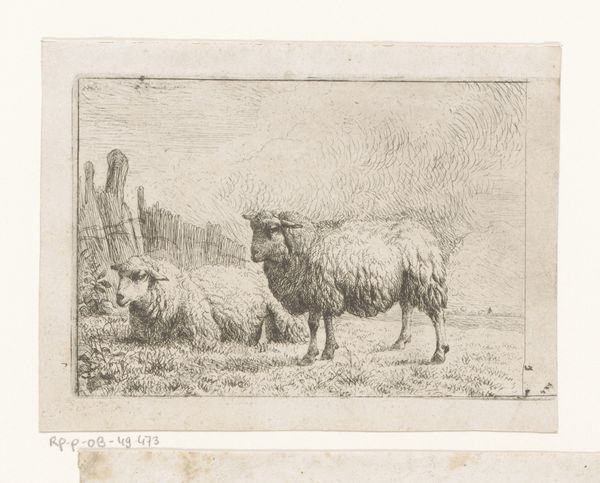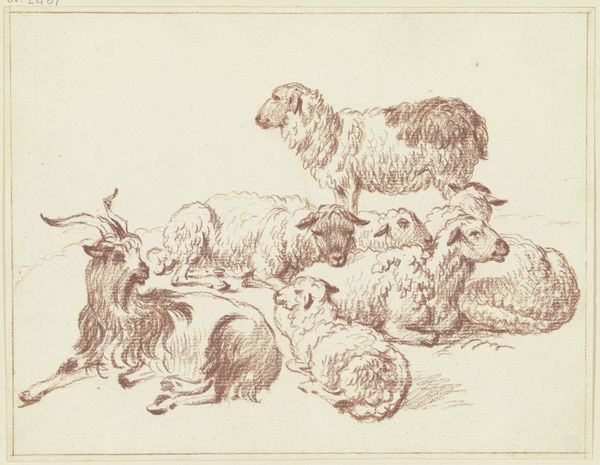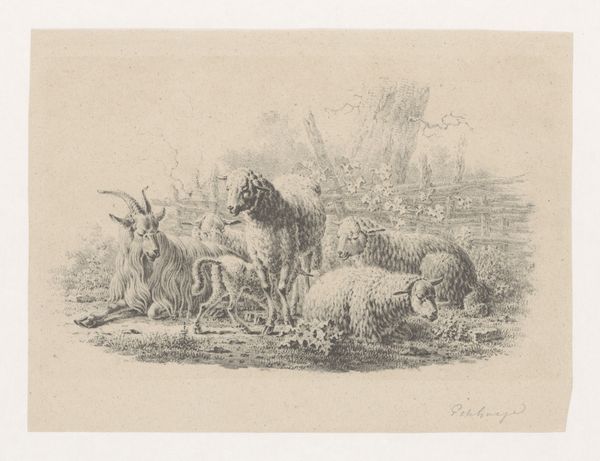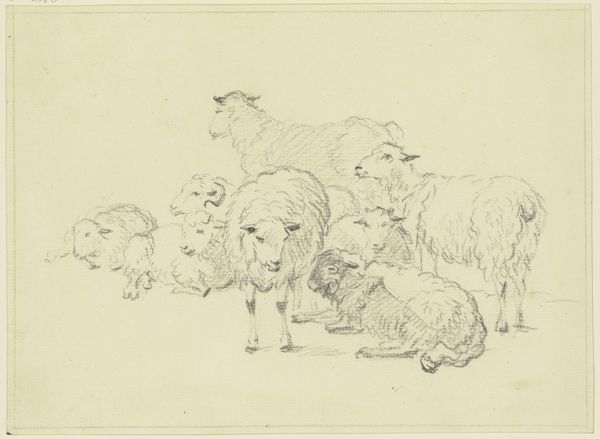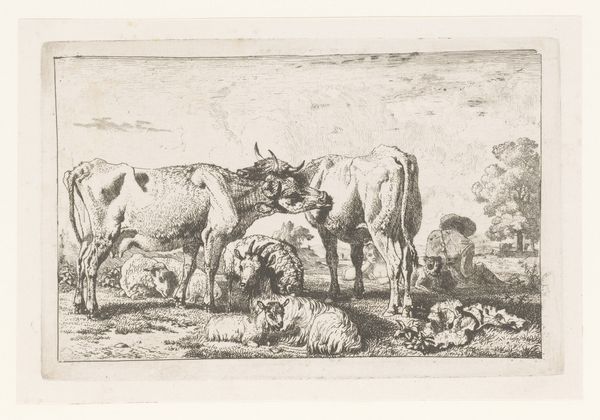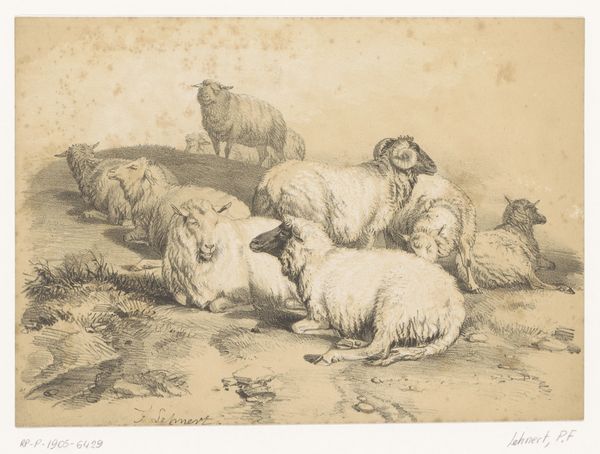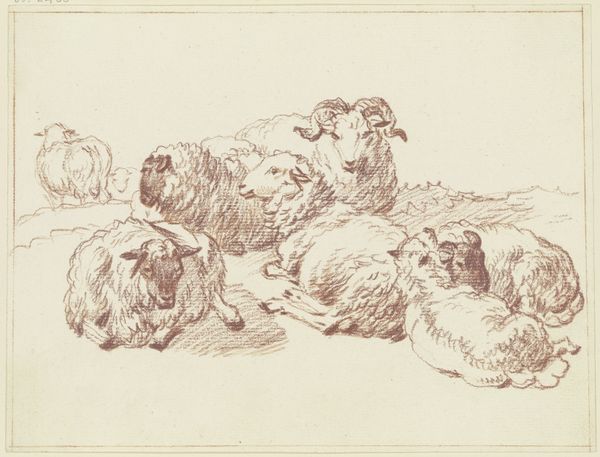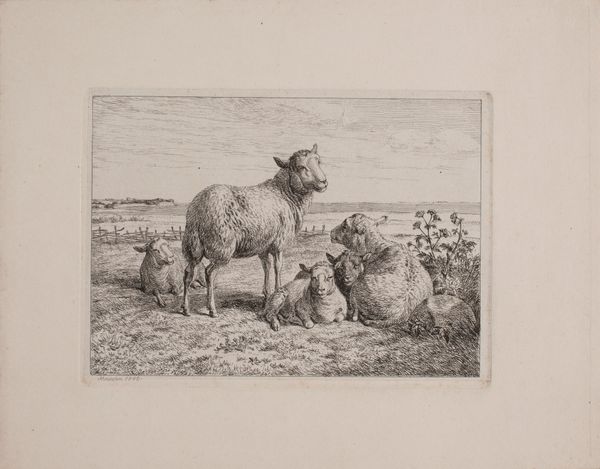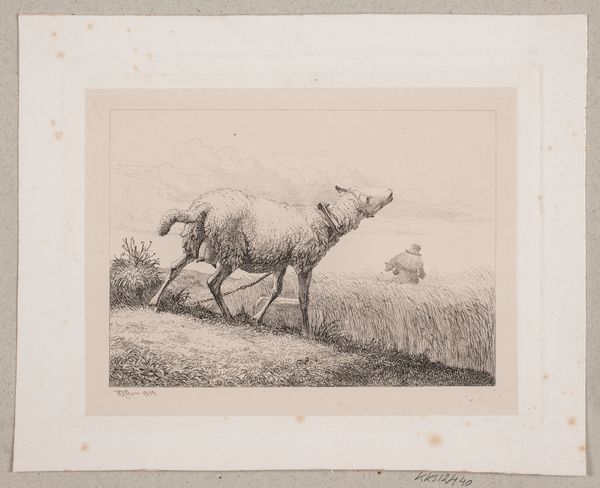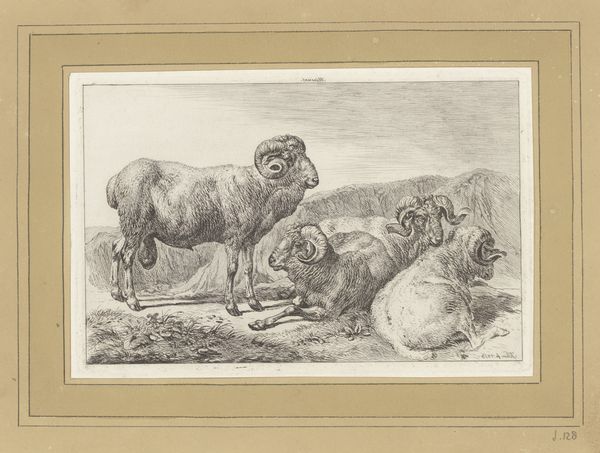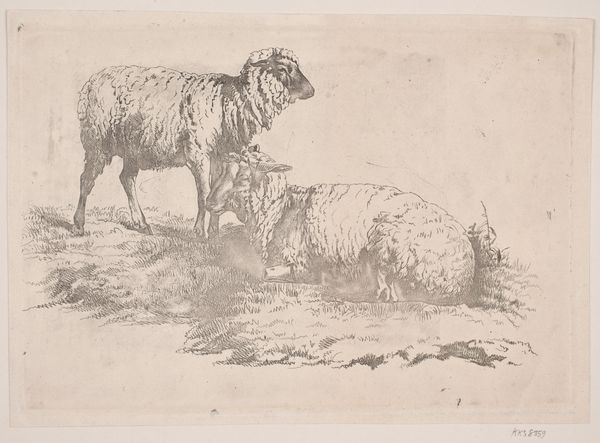
drawing, pencil
#
drawing
#
landscape
#
romanticism
#
pencil
#
genre-painting
Dimensions: height 106 mm, width 140 mm
Copyright: Rijks Museum: Open Domain
Johann Friedrich Morgenstern made this etching of four sheep in Dresden in 1798. At first glance, this small print seems like a simple pastoral scene, but images of sheep in this era carried complex social and political meanings. In late 18th century Europe, as agricultural economies were transforming, sheep often symbolized innocence, rural simplicity, and traditional ways of life. But it’s important to remember who was consuming these images. As urban centers grew and aristocratic wealth concentrated, idealized visions of the countryside became fashionable among the elite. Prints like this allowed wealthy urbanites to feel connected to a simpler world. Looking at the institutions, we can imagine how the art market played a role in promoting this kind of imagery. Understanding the historical context encourages us to think critically about these associations. Examining estate records and economic data, we begin to see how ideas about rural life can mask the realities of labor and inequality.
Comments
No comments
Be the first to comment and join the conversation on the ultimate creative platform.
